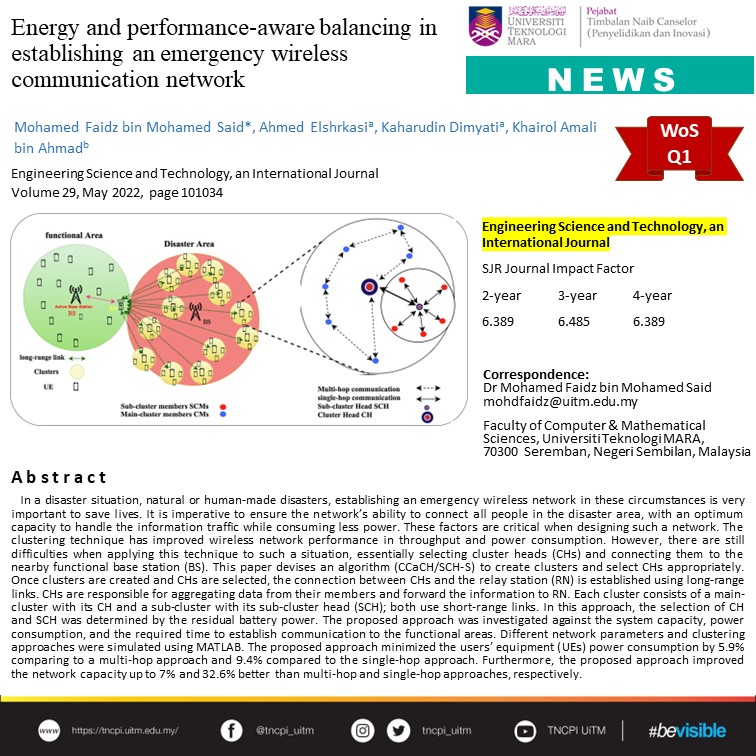
Q1 Journal | Engineering Science and Technology, an International Journal | Energy and performance-aware balancing in establishing an emergency wireless communication network
In a disaster situation, natural or human-made disasters, establishing an emergency wireless network in these circumstances is very important to save lives. It is imperative to ensure the network’s ability to connect all people in the disaster area, with an optimum capacity to handle the information traffic while consuming less power. These factors are critical when designing such a network. The clustering technique has improved wireless network performance in throughput and power consumption. However, there are still difficulties when applying this technique to such a situation, essentially selecting cluster heads (CHs) and connecting them to the nearby functional base station (BS).
This paper devises an algorithm (CCaCH/SCH-S) to create clusters and select CHs appropriately. Once clusters are created and CHs are selected, the connection between CHs and the relay station (RN) is established using long-range links. CHs are responsible for aggregating data from their members and forward the information to RN. Each cluster consists of a main-cluster with its CH and a sub-cluster with its sub-cluster head (SCH); both use short-range links.
In this approach, the selection of CH and SCH was determined by the residual battery power. The proposed approach was investigated against the system capacity, power consumption, and the required time to establish communication to the functional areas. Different network parameters and clustering approaches were simulated using MATLAB. The proposed approach minimized the users’ equipment (UEs) power consumption by 5.9% comparing to a multi-hop approach and 9.4% compared to the single-hop approach. Furthermore, the proposed approach improved the network capacity up to 7% and 32.6% better than multi-hop and single-hop approaches, respectively.
https://www.sciencedirect.com/science/article/pii/S2215098621001464
Correspondence:
Dr Mohamed Faidz Mohamed Said
mohdfaidz@uitm.edu.my
Faculty of Computer & Mathematical Sciences, Universiti Teknologi MARA, 70300 Seremban, Negeri Sembilan, Malaysia
